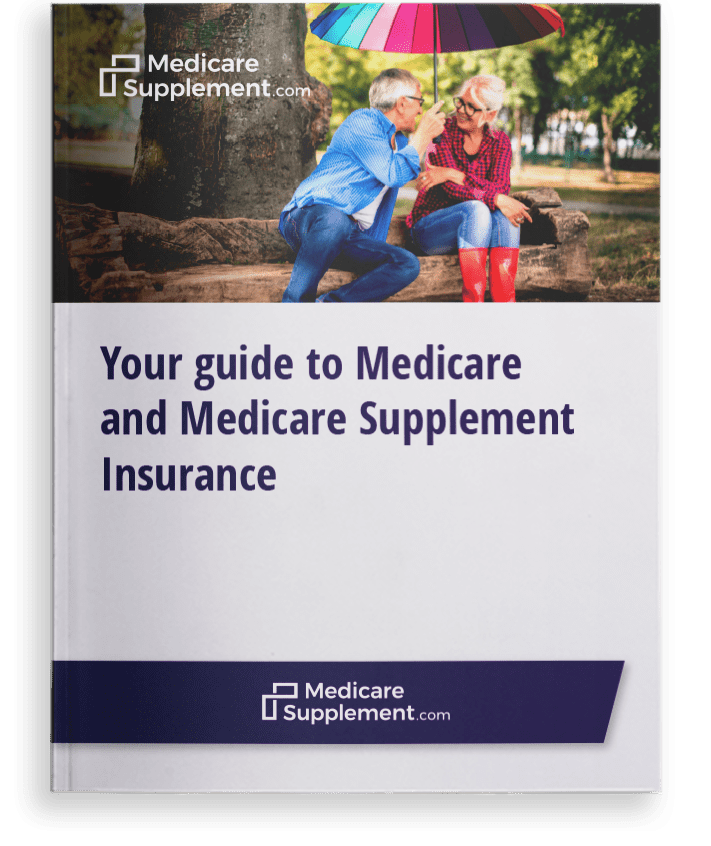Medicare 101
Medicare and Medicaid Dual Eligibility
As of 2021 (the most recent data available), 12.86 million Americans were dual eligible beneficiaries of Medicare and Medicaid. This equals over 20% of the total Medicare population in that year.1
Medicare is the federally-administered health insurance program for people age 65 and over and people with qualifying disabilities.
Medicaid is a health insurance program for people with limited financial resources that is administered both by federal and state governments.
People who qualify for both Medicare and Medicaid benefits are “dual eligible” beneficiaries.
Who Is Dual Eligible Medicare and Medicaid in 2024?
If you meet the required qualifications for Medicare and Medicaid in 2024, you may be dual eligible.
To qualify for Medicare enrollment, you must be:
-
At least 65 years old or have a qualifying disability
-
A U.S. citizen or permanent legal resident for 5 continuous years
Because Medicare is a federal program, the standards for eligibility are the same everywhere in the U.S.
Medicaid is a state-run program, and each state may have its own rules for eligibility. If you have income or assets that under a certain amount that is determined by your state, you may be eligible for Medicaid in 2024.
Assets counted toward Medicaid eligibility can include things like money in savings accounts, stocks, real estate and vehicles. Visit your state’s Medicaid website to find out if you qualify.
Full Dual Eligible vs. Partial Dual Eligible
People who qualify for both Medicare and Medicaid can be split into two different categories: full dual eligible and partial dual eligible.
-
A beneficiary who is enrolled in Medicare and receives full Medicaid benefits is full dual eligible.
-
A beneficiary who is partial dual eligible does not receive full Medicaid benefits. The benefits received from Medicaid are used to help pay for certain Medicare costs they may face, such as premiums or copays.
Compare Medigap plans in your area.
Find a planOr call now to speak with a licensed insurance agent:
1-800-995-4219
How Do Dual Eligible Medicare and Medicaid Work Together?
When a person is eligible for both Medicare and Medicaid benefits, Medicare serves as the primary payer and Medicaid is the secondary payer.
This means Medicare provides the first payment for covered services and items before Medicaid picks up some (or all) of the remaining costs.
What Are the Benefits of Being Dual Eligible in 2024?
If you are dual eligible, you can benefit from both Medicare and Medicaid. You may also qualify for a Medicare Savings Program (MSP).
A Medicare Savings Program is a federally funded program administered by individual states that helps people who have limited financial resources pay for costs like Medicare premiums, deductibles, copayments and coinsurance.
There are four types of Medicare Savings Programs which are detailed below. Income and asset limits are updated every April. The limits given below are current as of December 2023.
-
Qualified Medicare Beneficiary Program (QMB)
This program helps cover Medicare Part A and B premiums, deductibles, coinsurance and copayments.Eligibility requires an income of no more than $1,235 per month for an individual or $1,663 per month for a married couple. If you have financial resources that total no more than $9,090 for an individual or $13,630 for a married couple, you may be eligible.
-
Specified Low-Income Medicare Beneficiary Program (SLMB)
This program helps pay for Medicare Part B premiums.Eligibility requires an income of no more than $1,478 per month for an individual or $1,992 per month as a married couple. If you have financial resources of less than $9,090 for an individual and $13,630 for a married couple, you may meet eligibility requirements.
-
Qualifying Individual Program (QI)
The Qualifying Individual program pays for Medicare Part B premiums.Eligibility requires an income of no more than $1,660 per month for an individual or $2,239 for a married couple. Financial resources are capped at $9,090 for individuals and $13,630 for married couples.
-
Qualified Disabled Working Individual Program (QDWI)
This program pays for the Medicare Part A premium for people who meet select criteria.Income is restricted to no more than $4,945 per month for individuals and $6,659 for married couples. Resources are limited to $4,000 for an individual or $6,000 for a married couple.
Compare Medigap plans in your area.
Find a planOr call now to speak with a licensed insurance agent:
1-800-995-4219
What Is a Medicare Dual Eligible Special Needs Plans (D-SNP)?
Beneficiaries who qualify for both Medicare and Medicaid may also qualify for a Medicare Dual Eligible Special Needs Plan (D-SNP), if one is available where you live.
A Special Needs Plan is a type of Medicare Advantage (Medicare Part C) plan.
-
Medicare Advantage plans are sold by private insurance companies and provide the same benefits as Medicare Part A and Part B, combined into a single plan.
-
Some plans may offer additional coverage for services like vision, dental, hearing care and more.
Dual Eligible Special Needs Plans typically cover some of the costs for doctor’s visits and hospital stays. All D-SNPs provide prescription drug coverage.
Many D-SNP plans provide dental, vision and hearing benefits, and some plans even cover things like transportation to doctor’s offices and pharmacies, along with allowances to purchase health-related products.
Dual Eligible Special Needs Plans also typically feature a $0 monthly premium.
Medicare Supplement Insurance (Medigap) Can Help Pay for Out-of-Pocket Medicare Costs
If you are dual eligible for Medicare and Medicaid, you may be able to apply for a Medicare Supplement (Medigap) plan that’s available where you live.
A Medigap plan can help pay for some of your out-of-pocket costs such as deductibles or coinsurance.
If you are dual eligible for Medicare and Medicaid and enroll in a Medigap plan:
-
Your Original Medicare benefits will be the first (primary) payer for your health care services.
-
Then your Medigap plan benefits will help cover some additional costs, depending on which type of plan you have.
-
Finally, your Medicaid benefits will help pay for your remaining out-of-pocket costs for covered services.
A licensed insurance agent can help you learn more about your dual eligibility and how Medicare and Medicaid work with a Medicare Supplement plan.
Call today to speak with a licensed insurance agent and compare plans available in your area.
Find Medicare Supplement plans in your area.
Compare Plans1 Kaiser Family Foundation. Number of Dual-Eligible Individuals, Based on Medicare Claims Data, Timeframe: 2021. Retrieved January 2024, from https://www.kff.org/other/state-indicator/number-of-medicare-medicaid-enrollees-based-on-medicare-claims-data/?currentTimeframe=0&sortModel=%7B%22colId%22:%22Location%22,%22sort%22:%22asc%22%7D.

Get a Free Medicare Guide!
Enter your email address and get a free guide to Medicare and Medicare Supplement Insurance, as well as important Medicare news and tips. We promise to never send you spam – just helpful content!
By clicking "Get your guide" you are agreeing to receive emails from MedicareSupplement.com.

